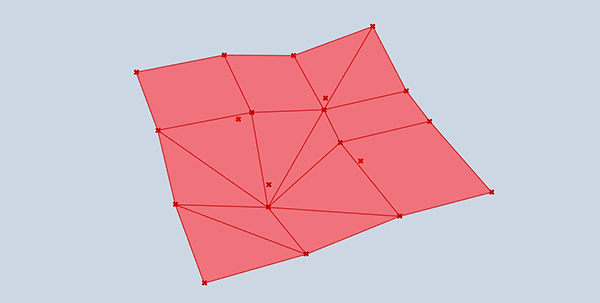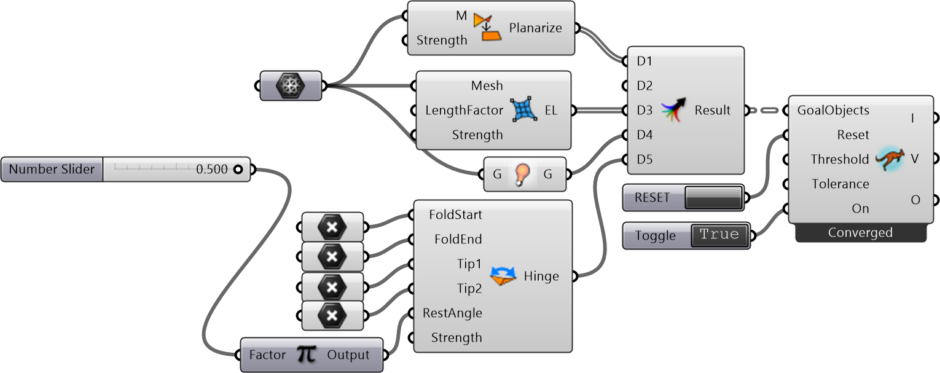Folding Experiments: Basics (1)
by Tuğrul Yazar | December 6, 2022 23:17
We will try to create collapsible structures in this new series called Folding Experiments[1]. In this example, we will be using Grasshopper[2] and Kangaroo components to understand the Folding Experiments: Basics first. Like other projects, this is a Parametric Modeling[3] course exercise that usually includes primary Grasshopper usage. In our first example, we will try to fold a mesh object. To be able to fold a surface like origami[4], we need to define the folding creases and faces.


The most critical component we will use is the “Hinge”, one of the Kangaroo goal objects. The first two inputs “Fold Start” and “Fold End” show the lines that make up the fold axis. Thus, only flat folds can be made with this component. We create a series of fold axes using two different data lists formed by opposing points. To do so, we must define point objects independent of the mesh surface. Then, these points will stick to the mesh vertices. Therefore, we define these points right above the vertices (using osnap). The other inputs, “Type1” and “Type2”, represent the two points we will move around the axis. The input that determines this rotation angle is “RestAngle”, which is linked this input to a Number slider.
Other target objects we use in the code are “Planarize” and “EdgeLengths”. Because we need to transform the mesh object into foldable, rigid surfaces. The “Show” component ensures that the surfaces of our mesh object are also visible during the folding calculation.
A code is better than a thousand words. You can download and review the example. To keep this “Folding Experiments: Basics”, we didn’t add many sophisticated details. We leave this to your imagination.
- Folding Experiments: https://www.designcoding.net/category/research/folding-structures/
- Grasshopper: https://www.designcoding.net/category/tools-and-languages/grasshopper/
- Parametric Modeling: https://www.designcoding.net/category/education/parametric-modeling/
- origami: https://en.wikipedia.org/wiki/Origami
- Download: https://www.designcoding.net/decoder/wp-content/uploads/2022/12/2022-12-06-folding1.gh
- Download: https://www.designcoding.net/decoder/wp-content/uploads/2022/12/2022-12-06-folding1.3dm
Source URL: https://www.designcoding.net/folding-experiments-basics-1/